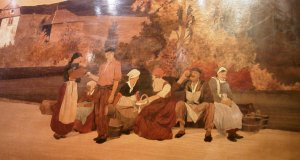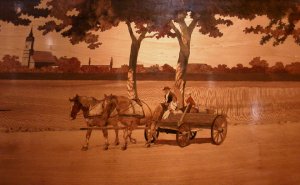

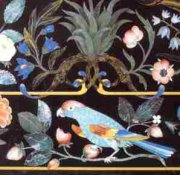
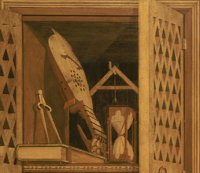 The intarsio, ancestor of this art, was already known from the antiquity and was used for the decoration of buildings; the material used then was stone, marble, mother of pearl, metal. See miracles of stony marquetry to the National Museum of Natural History:
MNHN: The treasure
The intarsio, ancestor of this art, was already known from the antiquity and was used for the decoration of buildings; the material used then was stone, marble, mother of pearl, metal. See miracles of stony marquetry to the National Museum of Natural History:
MNHN: The treasure
Then, the wooden marquetry appears in Italy in the XIV-th century; the artists of time realize their drawings themselves, or are inspired by famous painters (Botticelli); sometimes, they look for the 3-dimensional effect. The used material is the wood, mother-of-pearl, bone, stuck on the furniture or in decoration of buildings. Studiolo de Gubbio (Italie)

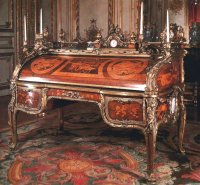 Then, the marquetry knows an important development in Germany and in France from the XVII-th century with Boulle who practises skillfully the wedding technique of metal and scale of tortoise.
Then, the marquetry knows an important development in Germany and in France from the XVII-th century with Boulle who practises skillfully the wedding technique of metal and scale of tortoise.
To the XVIII-th, the Parisian cabinetmaker Riesener and Oeben uses precious wood for the decoration of fleurons, flowery baskets, pastoral figures, on the royal furniture. www.metmuseum.org exemples
Nowadays, this art is still used in the copy of ancient furniture. One finds also the usage of wood varied to represent landscapes or local scenes, as Spindler in Alsace (France).
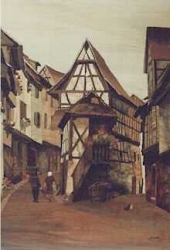 More and more today, artists use this means to give free course to their imagination in the architecture, the classic or contemporary cabinet furniture, and the different decoration.
More and more today, artists use this means to give free course to their imagination in the architecture, the classic or contemporary cabinet furniture, and the different decoration.
Note: Other information about history can be consulted on other sites.
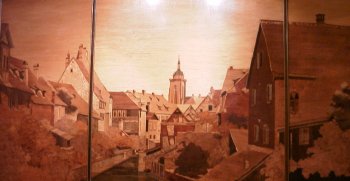 Here are some of the big pictures in Spindler room, realized by Paul Spindler, and visible in the Parisian brewery " At Jenny, place de la Republique.
Here are some of the big pictures in Spindler room, realized by Paul Spindler, and visible in the Parisian brewery " At Jenny, place de la Republique.
